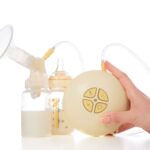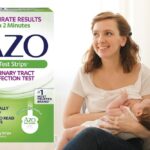With my first daughter, I did try breastfeeding. I also had quite a few friends and family members that breastfed their babies.
Along the way, I learned quite a bit about breast milk, like how you should pump breast milk beforehand so that you have it when you’re unavailable.
View in gallery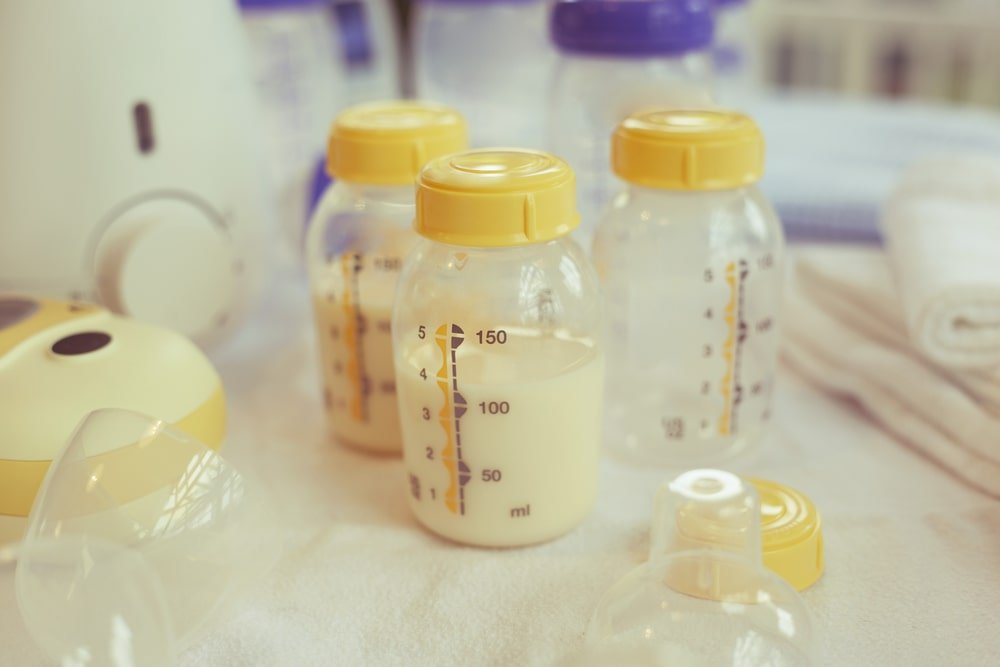
If you work full time and your little one is at home with dad for your shift, pumping breastmilk is a necessity. Once you pump and store your milk, you’ll need to re-heat it to feed your baby.
Learning how to do this safely is essential for your baby’s health. It’s also important to remember that you can only reheat breast milk once.
Benefits Of Breast Milk
Most people hear the benefits rattled off at a WIC or obstetrician appointment, but they seem to go in one ear and out the other. We all know that breastfeeding is better for babies. However, it’s important to understand WHY breastfed is best.
View in gallery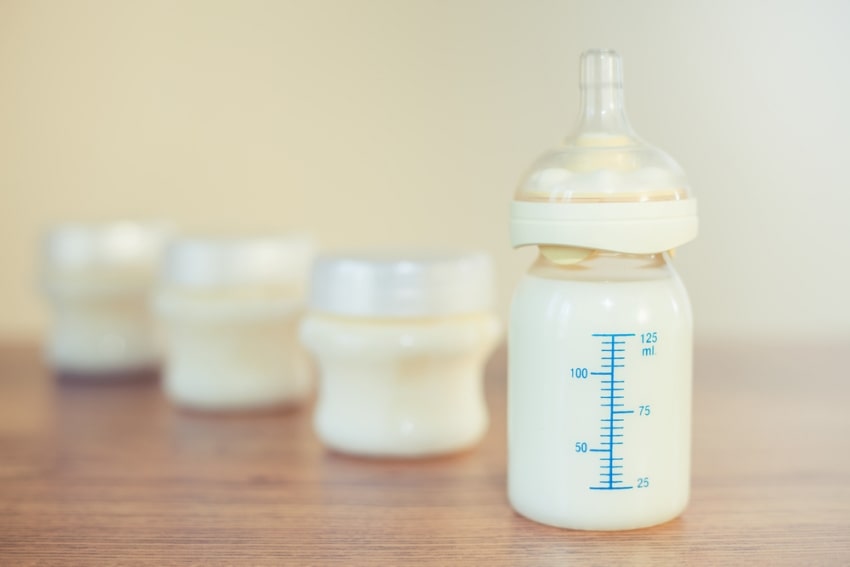
Fewer Illnesses
Breastfeeding gives your little one’s immune system a jump start. This is because breast milk is packed with so many antioxidants that viruses and bacteria don’t stand a chance. Overall, it results in your little one having less illness. That also means fewer trips to the doctor.
Less Digestive Issues
Breastfed babies are known for having less digestive issues than other babies. This is because the proteins in breast milk are easier to digest. You’ll never have to worry about switching formula because your little one can’t handle it when you breastfeed.
You’ll also have to deal with diarrhea less than moms who formula feed.
Fewer Ear Infections, Pneumonia, and Respiratory Infections
Specifically, your little one will have less of each of these than a formula-fed baby. For example, little ones that are fed formula are five times more likely to develop a respiratory infection than those that are strictly breastfed.
This is due to the high levels of vitamins, nutrients, and antioxidants in breast milk.
All of these impressive benefits and more are attributed to the high levels of vitamins, like ascorbic acid, antioxidants, and other nutrients found in breast milk.
This is why it’s important to understand how to properly heat breast milk and guidelines for how many times you can reheat breast milk. Heat, especially overheating or too much reheating, can kill them.
If you overheat a baby’s bottle of breast milk, you offer them significantly less in terms of nutritional value. You also need to make sure that you do not heat the milk too many times.
Baby’s Have Underdeveloped Immune Systems
One of the reasons to make sure that you are following safety guidelines is to guarantee that your baby is safe. Baby’s are more sensitive to bacteria than the rest of us, making them more likely to get sick than other people.
When you don’t follow safety guidelines, your baby is more likely to develop stomach problems, vomit, or wind up with a bacterial infection. This is because of bacteria breeds in milk, including breast milk, after your baby starts to drink it.
View in gallery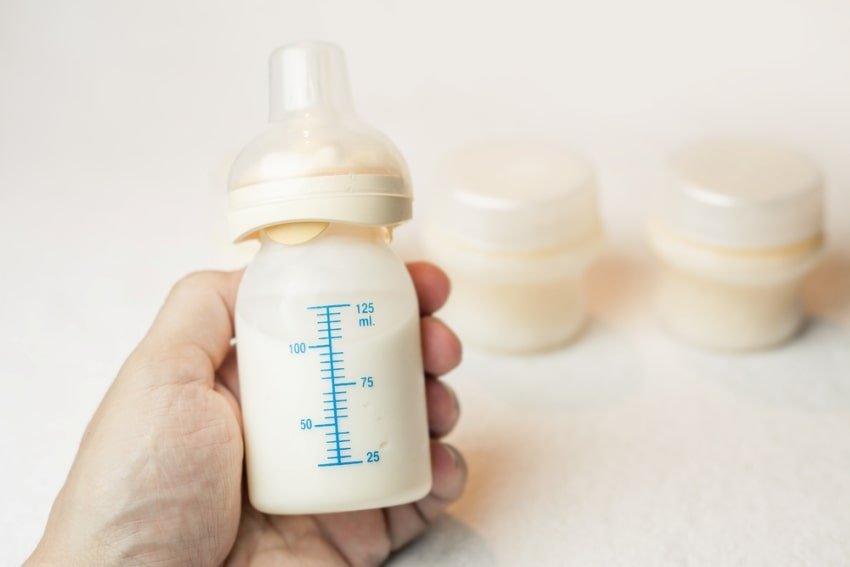
How Many Times Can I Reheat Untouched Breast Milk?
Once. Even if your baby doesn’t drink out of the bottle, and it did not sit out at all, you should only reheat it once. This is because heat kills the vitamins and nutrients in breast milk.
You are more than likely breastfeeding your baby to get all of the healthy benefits that come with breastfeeding, so why ruin it by killing the good bacteria and nutrients in breast milk?
TIP: Heating breast milk to a temperature that is too high can also kill nutrients in breast milk.
How Many Times Can I Reheat Breast Milk That Is Partially Consumed?
Once, provided that it is reheated within four hours. If your baby only drinks part of a breast milk bottle, it should be stored immediately in the refrigerator. It can then be reheated one more time within four hours.
If it is left to sit at room temperature, it cannot be reheated. Instead, the remaining breast milk should be thrown away. Harmful bacteria can breed in bottles after a baby drinks from them, and it will breed at an alarming rate at room temperature.
Giving your little one a bottle that has been left out longer than half an hour isn’t safe.
The safest way to handle this situation is to throw away the remaining breast milk. If your baby is hungry again in an hour or two later, use a fresh baggie of stored breast milk.
This guarantees that there are not harmful bacteria inside of it. It also ensures that you’re not killing nutrients with too much heat.
How To Properly Reheat Breast Milk
There are specific ways to reheat breast milk and other ways that can be dangerous for your little one. When you heat breast milk, it mustn’t get too hot.
If it does, this can kill the nutrients in the breast milk, even if it’s the first time you’ve heated the breast milk. There are also a few do’s and don’t’s that you need to follow.
View in gallery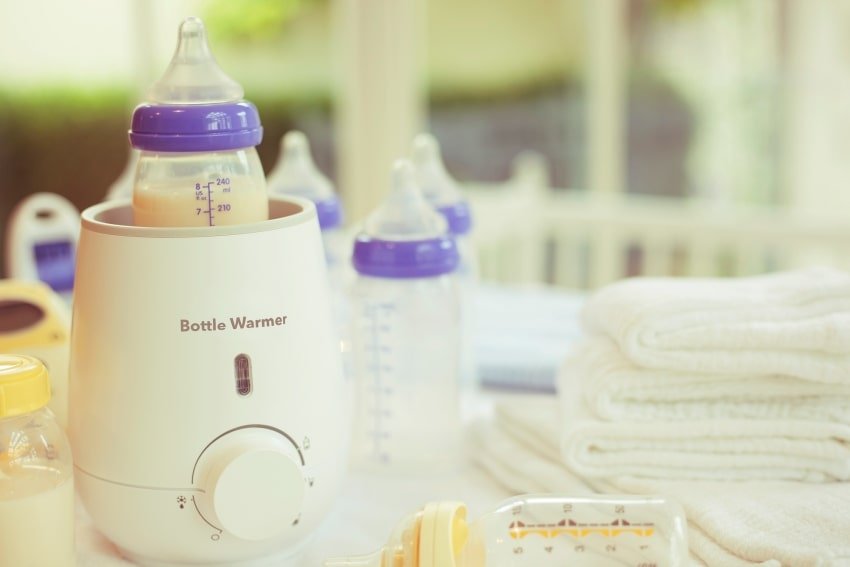
Bottle Warmers
There are bottle warmers on the market specifically designed for heating breast milk. These can be set to a specific temperature to ensure that breast milk does not get too hot.
They also heat the milk evenly so that you avoid hot spots. If you have the extra cash, these are a great investment. They save you time, and you never have to worry about the milk getting too hot.
[amalinkspro type=”showcase” asin=”B07QW94F8G” apilink=”https://www.amazon.com/dp/B07QW94F8G?tag=mominformedcom-20&linkCode=osi&th=1&psc=1″ new-window=”true” addtocart=”false” nofollow=”true” sc-id=”4″ imgs=”LargeImage” link-imgs=”false” specs=”☘【4-in-1 Multifunction】Warming milk and formula, heating food, defrosting, rapidly steam sterilized at a temperature of 212°F. Suitable for bottles of all sizes. Via water bath and steam, the Baby Bottle Warmer reserves all essences of food for your angels.~~~☘【LCD Display & Temperature Accuracy】With LED screen and touch button, show the preset temperature for you in constant temperature, preset the feeding time on the late nights and early mornings. Accurate heating time can be precisely adjusted to 1 minutes. Accurate temperature can be precisely adjust to 1°C. Adjustable temperature range from 35°C (95°F) to 85°C (185°F).~~~” btn-color=”#ff9900″ btn-text=”Buy on Amazon” alignment=”aligncenter” hide-prime=”0″ hide-image=”0″ hide-reviews=”0″ hide-price=”0″ hide-button=”0″ width=”750″]Baby Bottle Warmer, Eccomum Fast Breast Milk Warmer with a Timer[/amalinkspro]
Never Use The Microwave
Never use the microwave to reheat breast milk. First, you risk the milk getting too hot. You can wait on the milk to cool down, but that doesn’t mean that the vitamins that were already killed will come back. They won’t.
Second, you can create hot spots in the breast milk. It might feel like it’s the perfect temperature, but there could be a small spot in the milk that is too hot. This can burn your little one. Burns can range from mild to severe, depending on how hot the milk is.
Never Thaw Breast Milk At Room Temperature
Frozen breast milk should not be thawed and heated by leaving it at room temperature. Eventually, the milk will thaw and be the ideal temperature.
However, in the meantime, it will be at the perfect temperature for bacteria to breed. This makes this an unsafe practice.
Bowl Of Warm Water
If you don’t have a bottle warmer that heats breast milk, the best idea is to use a bowl of warm water. This lessens the risk that you’ll make the breast milk too hot. Instead, it will heat the milk slowly without overheating it.
Pay attention to the temperature of the water when you do this, though. If you place the breastmilk in a bowl of hot water that you just took off the stove, it will get a lot hotter than if you put it in a bowl of warm water.
Lukewarm water from the faucet is all that you need.
View in gallery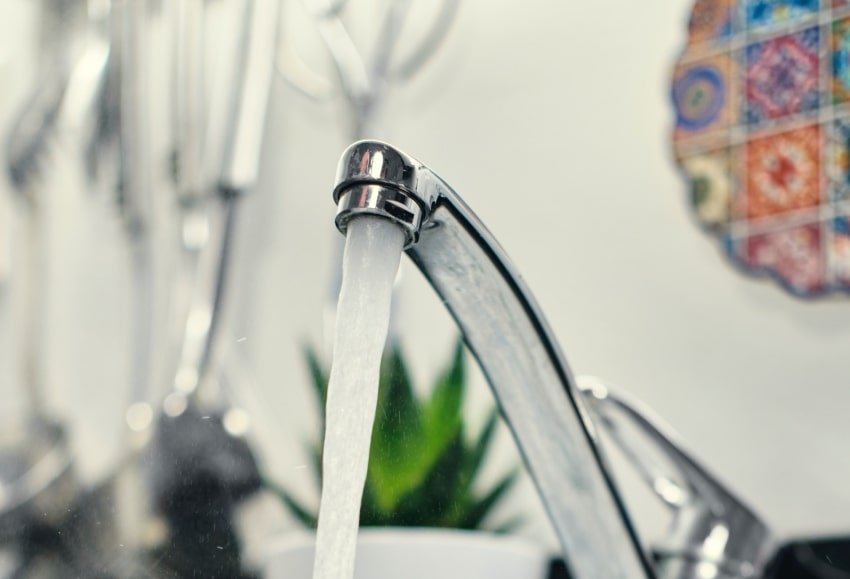
FAQ
Can I Reheat Breast Milk With Boiling Water On The Stove?
No, you cannot. This can make the breast milk dangerously hot, resulting in burns to yourself or your baby.
There are also common dangers with this method, such as the boiling water splashing on you and burning you, or melting the plastic bottle depending on the bottle.
Can You Refrigerate Breast Milk After It’s Been Heated Up?
Yes! If you heat up breast milk but discover that your baby was just tired and cranky, you can store it in the fridge for four hours. After this period, it should be thrown out. Please don’t leave it at room temperature or refreeze it, though.
Do I Have To Heat Up Breast Milk?
No, you don’t. Babies do not enjoy additional benefits of a warm bottle versus a cold bottle. Most babies prefer to drink a warm bottle, but if your baby takes a cold one, that is fine.
This also eliminates the chance that you will overheat the bottle or kill nutrients in breast milk due to heat.
How Long Can I Store Breast Milk In The Freezer?
It’s recommended that you don’t store it for longer than six months. Breast milk is created for the age and stage of your baby. If you pump milk when your little one is one month old, it’s for a one-month-old.
If you then wait to use it for five months, you’re giving six-month-old baby vitamins and nutrients that were better for a month old. When storing breast milk, follow the first in first out rule to avoid this.
Does Frozen Breast Milk Lose Nutrients?
Yes, it does. Fresh is always the best, if possible. Freezing causes a drastic decrease in the level of antioxidants found in breast milk. The same thing happens once it has been in the fridge for a couple of days.
However, even with the lower levels that frozen breast milk has, it still has more than baby formula.

